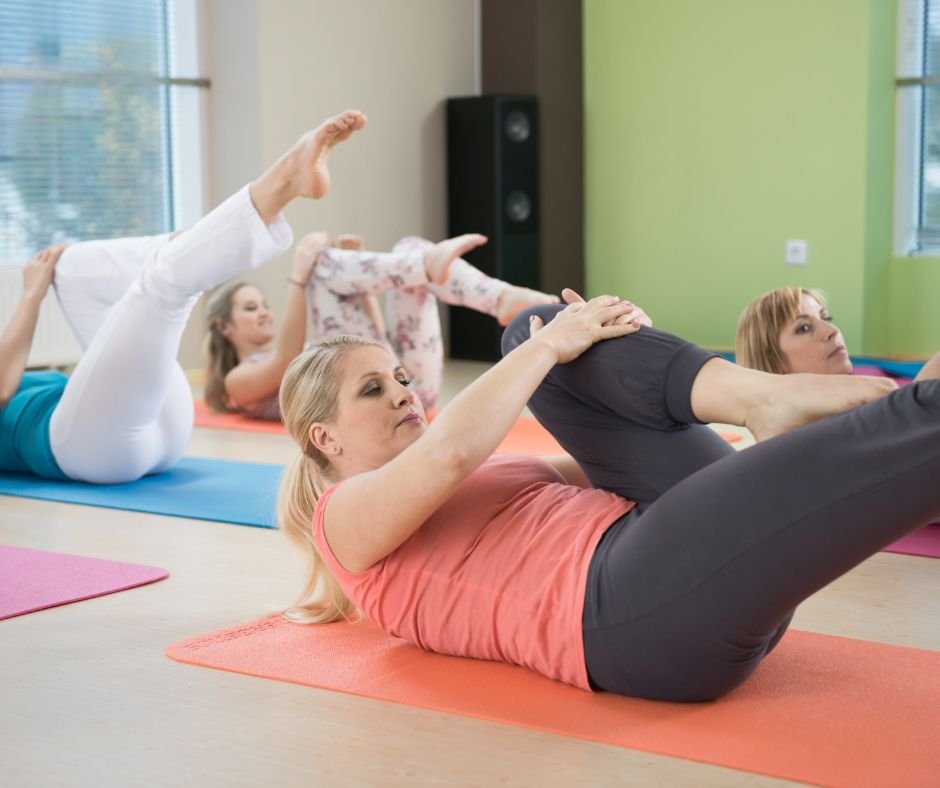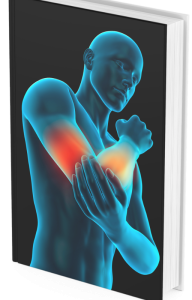Mind-body Practices Meet Modern Rheumatology: Old Traditions in Osteopathic Clinics
If you have ever wondered how ancient mind-body practices fit into the landscape of modern Osteopathy, you are not alone. Increasingly, clinicians and patients alike are exploring how therapies such as yoga, tai chi, meditation, hypnosis, and massage can support the management of chronic inflammatory diseases. These complementary therapies, rooted in traditions from Tibetan, Chinese, and Ayurvedic medicine, are now recognised by the World Health Organisation (WHO) as valuable adjuncts—not replacements—for conventional medical treatments.
The central idea behind mind-body practices is to harmonise the body and mind, activating the body’s own anti-inflammatory mechanisms through the psychoneuroimmunoendocrinologic system. This system links psychological processes, the nervous system, immune responses, and hormonal balance. In chronic disease management, especially for conditions like rheumatoid arthritis, this holistic approach is gaining traction. Yet, as Dr Marc Scherlinger of Strasbourg University Hospital emphasised during the French Congress of Rheumatology (SFR 2024), these therapies remain underused in Western clinics, despite mounting evidence and growing patient demand.
The synergy between yoga and osteopathy exemplifies how traditional practices can be harmoniously blended with contemporary medical approaches to enhance patient outcomes.
Complementary Therapies: Endorsed but Not a Cure-All
The WHO’s endorsement of mind-body therapies as complementary rather than alternative is significant. It signals a shift in how healthcare professionals view these interventions. As Dr Scherlinger put it:
“Mind-body therapies are not a panacea, but they absolutely have a place in rheumatology clinics.”
This balanced perspective is crucial. While these practices are not intended to replace disease-modifying drugs or standard care, they offer a low-risk, adaptable means of improving quality of life for many patients. Research shows that patient engagement and reported outcomes improve when mind-body therapies are used alongside conventional rheumatology treatments.
Real-world Impact: Stories from the Clinic
The practical benefits of mind-body practices are not just theoretical. A nurse at my surgery, for example, credits her regular tai chi sessions with transforming her attitude toward daily pain. She describes feeling more in control and less defined by her symptoms—a sentiment echoed by many who turn to these therapies for support with both physical limitations and mental strain.
Yoga: Ancient Practice, Modern Evidence
Yoga, with its blend of postures, breathwork, and meditation, is perhaps the most widely studied mind-body practice in rheumatology. A recent meta-analysis of 10 clinical trials involving 840 patients with rheumatoid arthritis found that yoga led to significant improvements in physical function, disease activity, and grip strength. However, the effects on pain, joint swelling, and inflammatory markers such as C-reactive protein were less pronounced. Minor reductions in certain cytokines (IL-6 and TNF-α) were observed, hinting at subtle anti-inflammatory effects, but the evidence remains mixed.
Tai Chi: Gentle Movement, Measurable Gains
Tai chi, a Chinese martial art combining movement and mindfulness, has also shown promise. A 2019 Cochrane review covering seven studies and 345 rheumatoid arthritis patients reported a 20% reduction in pain and a 10% improvement in physical function. Tai chi was particularly effective in enhancing joint range of motion. However, these studies did not assess pharmacological outcomes, so its effects on inflammation remain unclear.
Meditation, Hypnosis, and Massage: Mindful Relief
Meditative practices, including mindfulness-based cognitive therapy and hypnosis, are increasingly used to address psychological distress, depression, and sleep disorders in chronic inflammatory diseases. While a meta-analysis of five trials found no significant change in disease activity scores, participants did report less psychological distress and greater self-efficacy. Massage therapy, mainly studied in osteoarthritis, has demonstrated short-term improvements in pain, fatigue, and joint mobility, making it a useful adjunct for those with residual discomfort or stress.
Adaptability and Patient-centred Care
One of the greatest strengths of mind-body practices is their adaptability. Whether you are dealing with physical limitations or mental strain, there is likely a therapy that can be tailored to your needs. These interventions align with modern, patient-centred approaches in rhyeumatolog, supporting shared decision-making and the growing preference for nondrug treatments.
Dr Scherlinger advises that referrals should be made only to qualified practitioners with recognised training. Patients should be cautious of exaggerated claims and high fees, and always continue with their prescribed medical treatments. The overall benefit-risk profile of these complementary therapies is highly favourable, especially when integrated thoughtfully into chronic disease management.
Yoga, Tai Chi, and Massage: Successes, Pitfalls, and Numbers Worth Knowing
When it comes to chronic pain management and quality of life improvements in rheumatology, mind-body practices like yoga, tai chi, and massage therapy are quietly but steadily gaining ground. These interventions, officially recognised by the World Health Organisation, are not meant to replace conventional treatments, but rather to complement them—offering patients new avenues for pain relief and functional gains, especially in the context of rheumatoid arthritis (RA) and osteoarthritis.
Yoga Interventions: What the Numbers Reveal
Yoga for rheumatoid arthritis has moved beyond anecdote, with research now providing a clearer picture of its benefits and limitations. A recent meta-analysis, pooling data from 10 clinical trials and 840 RA patients (86% female, aged 30–70), found that yoga interventions led to significant improvements in physical function, disease activity, and grip strength. These gains are particularly meaningful for those struggling with daily tasks—one patient, Sandra, shared:
“After two months of yoga, I could open jars again!”
However, the same studies showed that yoga did not significantly affect pain scores, swollen joint counts, or key inflammation markers such as C-reactive protein and erythrocyte sedimentation rate. There were only mild reductions in IL-6 and TNF-α, suggesting that while yoga enhances function, its impact on objective inflammation is subtle at best.
- Key elements of yoga interventions: posture (asana), breathing (pranayama), focus, and meditation.
- Best suited for improving physical function and grip strength.
- Less robust for direct pain relief or inflammation control.
Tai Chi Benefits: Subtle but Significant
Tai chi, a Chinese martial art blending gentle movement and balance, has also been put to the test. A 2019 Cochrane review covering seven studies and 345 RA patients found that tai chi practice resulted in a 20% reduction in pain, a 5% decrease in disease activity, and a 10% improvement in physical function. These are not dramatic shifts, but for many, they are enough to make daily life more manageable. One patient described learning tai chi as “like reverse ageing for my ankles”—a vivid reminder that results can feel deeply personal.
- Physical function and balance: Tai chi’s slow, controlled movements help restore confidence and reduce fall risk.
- Pain relief: The 20% reduction in pain is meaningful, though not transformative.
- No pharmacological or inflammatory markers were assessed in these studies, so the anti-inflammatory effects remain unclear.
While the data on inflammation is less conclusive, tai chi’s benefits for physical function and pain management are supported by research. This makes it a valuable option for those seeking gentle, accessible exercise.
Massage Therapy: Short-Term Relief for Osteoarthritis
Massage therapy finds its strongest evidence base in osteoarthritis, rather than Rheumatoid Arthritis. A meta-analysis of three randomised controlled trials demonstrated short-term improvements in pain, fatigue, and overall well-being, with notable reductions in WOMAC (Western Ontario and McMaster Universities Osteoarthritis Index) scores and enhanced joint mobility. The effect on inflammatory cytokines remains unknown, but the immediate gains in comfort and movement are clear.
- Massage therapy is best suited for: Osteoarthritis patients with persistent pain or mechanical discomfort.
- May also help with stress, anxiety, and tolerance to medications like methotrexate.
- Works well as an adjunct to conventional therapy, not a replacement.
Sophrology and Hypnosis: The Wild Cards
Sophrology and hypnosis are emerging as intriguing, if less proven, options in chronic pain management. While enthusiasm for these approaches is growing, the evidence base is still thin. Early studies suggest potential for psychological benefits, especially in managing stress and sleep disorders, but robust data in rheumatology is lacking. As Dr Scherlinger notes, “enthusiasm outpaces firm proof” in these areas.
Practical Guidance and Patient Safety
If you are considering yoga interventions, tai chi benefits, or massage therapy, it is crucial to seek out qualified practitioners and remain cautious of exaggerated claims or high fees. These practices should always complement, not replace, your prescribed medical treatments. For many, the greatest value lies in the adaptability of these therapies—allowing you to tailor your approach to your own physical abilities and preferences.
In summary, while mind-body practices are not a cure-all, they offer meaningful pain relief, functional improvements, and enhanced quality of life for many living with chronic inflammatory diseases. Their risk profile is highly favourable, and patient engagement often improves when these options are part of a broader chronic pain management plan.
Caveats, Credibility, and the Curious Mind: Mindfulness and the Art of Staying Grounded
As you explore the expanding world of mind-body practices in rheumatology, it is vital to keep both feet firmly on the ground. Mindfulness-based interventions, yoga, tai chi, massage, and other relaxation techniques are gaining traction as complementary therapies, but their role is nuanced. The evidence is promising, yet not without its caveats.
Research shows that mindfulness-based interventions can be highly effective in managing psychological distress, depressed mood, and anxiety among patients with chronic inflammatory conditions. For example, a meta-analysis covering five rheumatoid arthritis (RA) trials and nearly 400 participants found notable improvements in psychological distress and self-efficacy. However, these interventions did not significantly alter objective disease activity scores, such as the DAS28, nor did they consistently reduce pain according to visual analogue scale (VAS) data. In other words, while you may feel better and more in control, the underlying disease process might remain unchanged.
This distinction is important. Mindfulness and similar practices are excellent tools for enhancing your quality of life, helping you cope with the emotional and psychological burdens of chronic illness. They foster patient engagement, encourage self-awareness, and offer a sense of agency. Yet, as Dr Marc Scherlinger aptly puts it,
“It’s about resetting, not just fixing. The practices are safe, but they’re not miracles—don’t toss your meds!”
The message is clear: these approaches are designed to supplement, not supplant, other medical treatments.
Yoga and tai chi, too, have demonstrated their worth as pain relief strategies and relaxation techniques. Yoga, with its blend of postures, breathwork, and meditation, has shown significant improvements in physical function and grip strength for RA patients, though effects on pain and inflammation are less robust. Tai chi offers modest reductions in pain and improvements in joint mobility, but again, the impact on disease activity is limited. Massage therapy, particularly in osteoarthritis, can provide short-term relief from pain and fatigue, making it a valuable adjunct for those with residual symptoms despite well-controlled inflammation.
With the growing popularity of these complementary therapies, the importance of safety, cost, and practitioner credentials cannot be overstated. The World Health Organisation and leading medical platforms like Medscape stress the need for proper referral to qualified practitioners. Be wary of grandiose promises or practitioners who suggest abandoning standard care. Always ensure your chosen therapy is delivered by someone with recognised training and experience.
It is also worth noting that patient demand for mind-body interventions is on the rise. Shared decision-making is becoming the norm in rheumatology, with patients seeking more holistic, non-drug pain relief strategies. This shift is encouraging, as it places you at the centre of your care, empowering you to explore therapies that align with your values and preferences. However, balanced expectations are key. While these interventions can transform your experience of illness, they are not a cure.
Looking ahead, there is a clear need for more robust, high-quality research to better define the long-term benefits and optimal protocols for these practices. For now, the evidence supports their use as safe, adaptable, and effective tools for improving psychological well-being and patient-reported outcomes. They offer a low-risk way to enhance your quality of life, provided you remain grounded in the realities of your condition and continue to work closely with your healthcare team.
In summary, mindfulness-based interventions and related mind-body therapies are quietly transforming rheumatology—not by bending the rules of biology, but by broadening the scope of what it means to live well with chronic disease. Stay curious, stay grounded, and remember: the art of healing is as much about how you feel as it is about what the numbers say.
TL;DR: Mind-body therapies—think yoga, tai chi, massage, and more—are gaining ground in rheumatology, offering genuine boosts to mood, movement, and sometimes even inflammation. They’re not magic bullets, but when guided by trained pros and seen as companions, not replacements, these practices can help you or your patients move better, feel better, and thrive alongside standard treatments.





